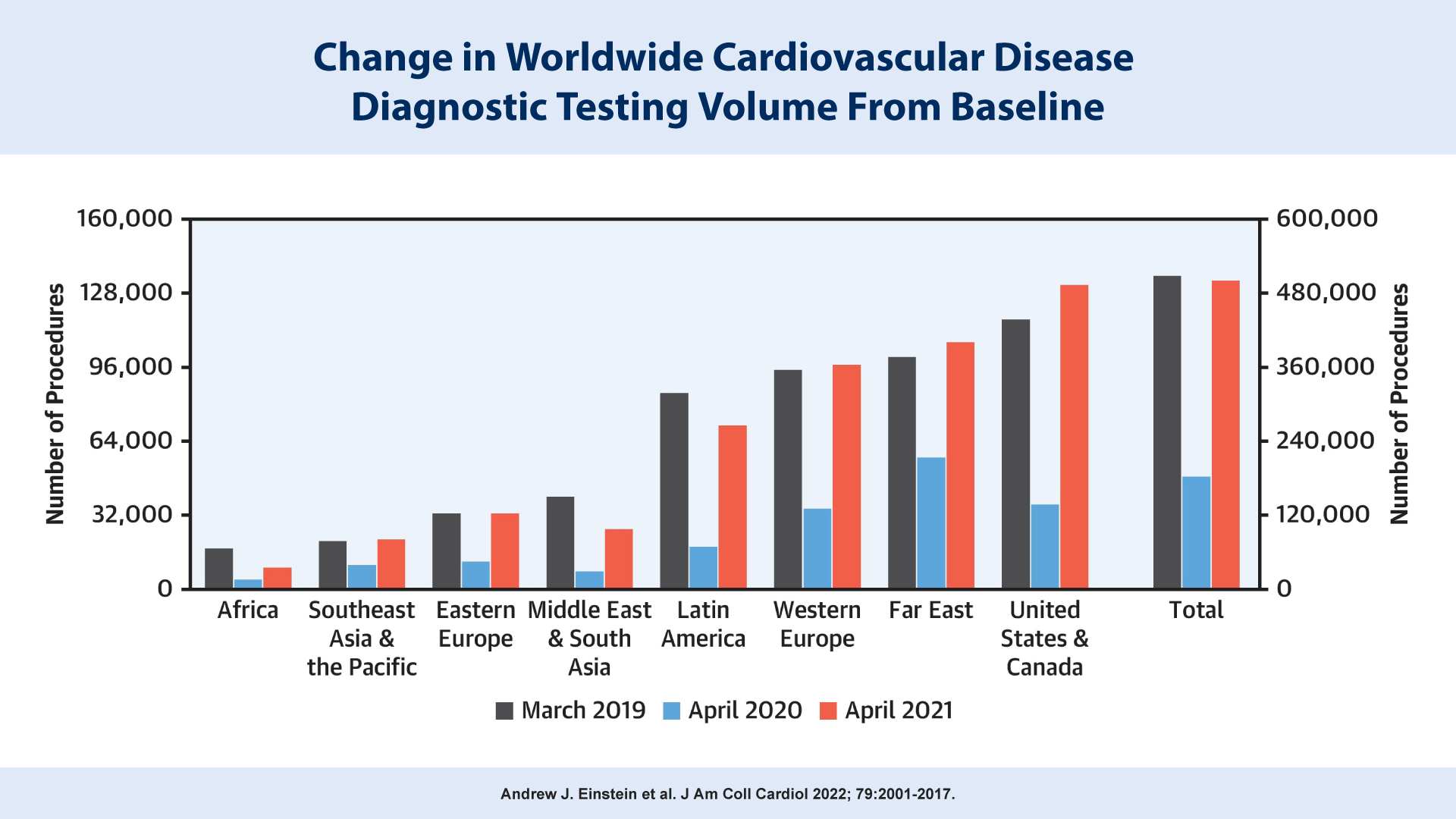据世界卫生组织(世卫组织)称,在全球范围内,心血管疾病(即心脏和血管疾病)是死亡的主要原因,每年导致约1800万人死亡。其中,超过四分之三的死亡发生在低收入和中等收入国家。
国际原子能机构(原子能机构)核医学和诊断成像处处长Diana Paez说:“大流行病扰乱了所有地区的医疗保健服务,影响了心脏病等慢性病的管理服务。而如今,在全球范围内,心脏诊断服务的恢复水平尤为不同,在高收入国家出现了明显反弹,而低收入国家则处于低迷状态。”
据世界卫生组织(世卫组织)称,在全球范围内,心血管疾病(即心脏和血管疾病)是死亡的主要原因,每年导致约1800万人死亡。其中,超过四分之三的死亡发生在低收入和中等收入国家。 国际原子能机构(原子能机构)核医学和诊断成像处处长Diana Paez说:“大流行病扰乱了所有地区的医疗保健服务,影响了心脏病等慢性病的管理服务。而如今,在全球范围内,心脏诊断服务的恢复水平尤为不同,在高收入国家出现了明显反弹,而低收入国家则处于低迷状态。”
据世界卫生组织(世卫组织)称,在全球范围内,心血管疾病(即心脏和血管疾病)是死亡的主要原因,每年导致约1800万人死亡。其中,超过四分之三的死亡发生在低收入和中等收入国家。
国际原子能机构(原子能机构)核医学和诊断成像处处长Diana Paez说:“大流行病扰乱了所有地区的医疗保健服务,影响了心脏病等慢性病的管理服务。而如今,在全球范围内,心脏诊断服务的恢复水平尤为不同,在高收入国家出现了明显反弹,而低收入国家则处于低迷状态。”
2020年3月,世卫组织宣布2019冠状病毒病为大流行病。大流行病开始后,原子能机构进行了一项全球调查,将2019年至2020年全球心血管诊断程序的减少进行了量化分析。调查发现,从2019年3月到2020年4月,心脏病的标准诊断程序,如超声心动图、血管造影和压力测试,在全球减少了64%,其中,在东南亚和太平洋地区减少了52%,在中东和南亚减少了84%。
随后,原子能机构利用国际研究综合系统(IRIS)对2020年4月至2021年4月期间的诊断程序量进行了后续调查,发现世界各地区和国家的恢复情况各不相同。例如,东南亚已完全从大流行病造成的程序减少中恢复过来,但在其他地区,如中东和南亚,诊断程序的数量仍然较低。这项调查的结果于2022年5月发表在《美国心脏病学院学报》上,共评估了107个国家669个住院和门诊中心的心脏成像数量和类型。中高收入国家的恢复及增长率为99%,高收入国家的恢复及增长率为108%。
纽约哥伦比亚大学的心脏病专家和研究员Andrew Einstein说:“这种心脏诊断成像的数量下降确实有可能在未来几年导致某些国家的整体心血管诊治情况恶化,从而增加全世界心血管健康的地区差距。” Einstein和Paez是这两项研究的共同作者。
后续调查显示,在不同的诊断检测中,压力测试的使用频率降低了12%,而先进成像检测的使用频率则有所增加——心脏计算机断层照相法(CT)增加了14%,正电子发射断层照相法(PET)和磁共振成像(MRI)分别增加了22%和25%。
Einstein说:“我们需要了解,压力测试使用减少和先进心脏成像使用增加的趋势是否会在未来几年持续下去。我认为,更广泛地使用成像模式和检测的多样化组合是一个潜在的积极发展。没有哪种检测适合所有患者,相反,我们努力在正确的时间为患者找到正确的检测方式。”
该研究还发现,据估计,与大流行病相关的心理压力影响了近40%的工作人员,进而影响了78%的医疗中心的患者护理。压力水平在不同的收入群体中几乎同样普遍,约38%低收入国家的医生和37%高收入国家的医生称由于大流行病而产生了过度的压力。
More than two years ago, in March 2020, the WHO declared the COVID-19 outbreak a pandemic. On the outset of the pandemic, the IAEA conducted a worldwide survey that quantified the global decrease in cardiovascular diagnostic procedures from 2019 to 2020. The survey found standard diagnostic procedures for heart disease, such as echocardiograms, angiographies and stress tests, decreased by 64 per cent from March 2019 to April 2020.
Since then, by April 2021, diagnostic procedures in low-income countries had only recovered by 30 per cent and in lower-middle income countries by 46 per cent, according to a follow-up survey conducted by the IAEA using the International Research Integration System (IRIS). The results, published in May 2022 in the Journal of the American College of Cardiology, evaluated the volume and types of cardiac imaging from 669 inpatient and outpatient centres in 107 countries. Upper-middle-income countries had recovery – and growth – rates of 99 per cent, and high-income countries recovery and growth rates of 108 per cent.
“This decline in cardiac diagnostic imaging has the real potential to lead to worsened cardiovascular outcomes in low- and lower-middle income countries in the years ahead and, thus, increased disparities in cardiovascular health worldwide,” said Andrew Einstein, a cardiologist and researcher at Columbia University in New York. Einstein and Paez were co-authors of both studies.
Of the different diagnostics tests, the follow-up survey revealed that stress testing was used less frequently by 12 per cent, while advanced imaging tests were used more frequently – cardiac computed tomography (CT) increased by 14 per cent and positron emission tomography (PET) and magnetic resonance imaging (MRI) by 22 and 25 per cent, respectively.
“We will need to see whether the decreased use of stress tests and growth of advanced cardiac imaging persists in the years ahead,” Einstein said. “I regard this as a potentially positive development with wider use of a more diverse portfolio of imaging modalities and tests. No one test is right for all patients, rather we strive to find the right test for the right patient at the right time.”
The study also found that pandemic-related psychological stress was estimated to have affected nearly 40 per cent of staff, subsequently affecting patient care at 78 per cent of healthcare centres. The levels of stress were almost equally prevalent across income groups, with about 38 per cent of physicians in lower income countries and 37 per cent in higher income countries reporting excess stress because of the pandemic.
